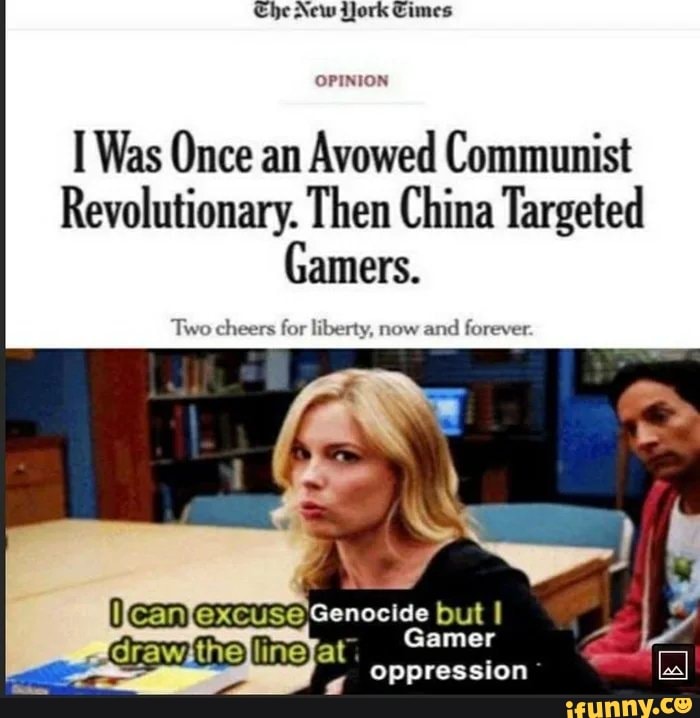
The reborn Tomorrow Children won’t depend on an external server anymore, therefore its performance will continue on for a longer time. The reincarnation, which was close in 2017, will lose any kind of shareware, but receive large amounts of content. So, The Tomorrow Children, revived, got the subtitle Phoenix.
#I WAS ONCE AN AVOWED COMMUNIST CHINA GAMERS SERIES#
The game was a series of children who decided to build a future in pseudo-Soviet style. The development team from the independent studio Q-Games is going to revive The Tomorrow Children, a once shareware project that combines tactical, social, and action elements. Mohamed Siad Barre’s forces were decimated and exhausted, which eventually led to a revolt against his rule and his ultimate exile from Somalia.I must admit that the game has a difficult fate. It renounced help from its small contingent of communist allies and eventually sought help from the United States. Somalia, in the end, would be forced out of the Ogaden region. Israel, who didn’t want to see the Red Sea dominated by unfriendly Arab countries, sent advisors, supplies, and equipment to Ethiopia, while Syria began sending skilled pilots to fly for Somalia’s Air Forces. The war also became a proxy for other ongoing conflicts in the region. In Ogaden, China provided political advice, financial aid, and military assistance. China had famously split with the Soviet Union earlier in the 1970s and was competing for influence among other communist nations around the world. Romania’s leader, Nicolae Ceaușescu had just changed Romania’s form of communism from the Soviet-style to more of a dictatorship, but was short of leaving the Warsaw Pact. The lack of support from the Communist Bloc forced Barre to cut Somalia off from most of the Communist world, except for China and Romania. China and Romania sent supplies and arms to the Somalis. But Somalia wasn’t left completely out in the cold from communist assistance. East Germany, North Korea, and South Yemen all supplied the Ethiopian side. Other communist countries backed Ethiopia against Somalia as well. By the time Ethiopia was ready to counterattack, they were armed with Cuban troops and Soviet generals.Ĭuban artillery crew during the Ogaden War. With this in mind, the Soviet Union and Cuba began providing arms, material and even troops to the Ethiopian defense. Ethiopia, racked by civil war, managed to stop the Somalis by raising a massive 100,000-man militia.Įthiopia’s Derg leadership formed an avowed Marxist-Leninist state, modeled after Soviet-style communism, while Somalia was more of a socialist dictatorship.

By the end of 1977, Somalia controlled almost a third of Ethiopia with a 70,000-strong force. The Somali forces advanced rapidly, capturing 60 percent of the Ogaden within the first month of the war.

In 1977, Barre had enough and invaded the Ogaden using the weapons provided by the Soviet Union. That didn’t stop the Derg from criticizing neighboring Somalia, accusing it of trying to infiltrate disputed Ethiopian territory called Ogaden. It wasn’t an easy win for the Derg, because they had to fight opposition forces during the Ethiopian Civil War, which would last for around 15 years. In 1974, Selassie was deposed, imprisoned and later assassinated, leaving the Ethiopian communists calling themselves the Derg in charge of the country. A few years later in neighboring Ethiopia, the government of Emperor Haile Selassie was overthrown by a communist insurrection.


 0 kommentar(er)
0 kommentar(er)
